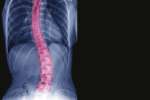We’ve heard it for most of our lives. “Stand up straight. Sit up straight.” Were mom’s reminders really her way of preventing future back pain? Maybe. Sometimes back pain is the result of an injury, accident or congenital condition, but most of the time it is the result of day to day, repetitive activities like sitting at a computer, lifting or carrying.
If we can take the time to think about and practice good posture during these activities, back pain could be reduced considerably. Good posture is nothing more than keeping your body in alignment. Visualize a straight line running from your earlobe, through your shoulder, hip, knee and to the middle of your ankle. Those bad slouching habits can be hard to break, so continually remind yourself of this imaginary line until it becomes natural.
If you sit at a computer for most of your working day, posture is extremely important. "Sitting all day is the worst thing in the world you can do for your back," said Dr. Joel Press, the medical director of the Spine & Sports Institute at the Rehabilitation Institute of Chicago. Sitting puts nearly twice the pressure on the spine as standing. And if you are slouching, the pressure increases even more. One of the best things you can do at your desk job is to adjust your computer screen and keyboard to positions that don’t have you slouched to type or see your screen. Also, use a lumbar pillow for back support, and don’t stay locked in the seated position for hours at a time. Get up at least every 30 minutes, stretch and walk around.
The following stretches from Harvard Medical School are great for practicing during the day:
- Shoulder blade squeeze. Sit up straight in a chair with your hands resting on your thighs. Keep your shoulders down and your chin level. Slowly draw your shoulders back and squeeze your shoulder blades together. Hold for a count of five; relax. Repeat three or four times.
- Upper-body stretch. Stand facing a corner with your arms raised, hands flat against the walls, elbows at shoulder height. Place one foot ahead of the other. Bending your forward knee, exhale as you lean your body toward the corner. Keep your back straight and your chest and head up. You should feel a nice stretch across your chest. Hold this position for 20–30 seconds. Relax.
- Arm-across-chest stretch. Raise your right arm to shoulder level in front of you and bend the arm at the elbow, keeping the forearm parallel to the floor. Grasp the right elbow with your left hand and gently pull it across your chest so that you feel a stretch in the upper arm and shoulder on the right side. Hold for 20 seconds; relax both arms. Repeat to the other side. Repeat three times on each side.
The doctors at NewSouth NeuroSpine want to help you make lifestyle choices now that can provide multiple benefits down the road.






